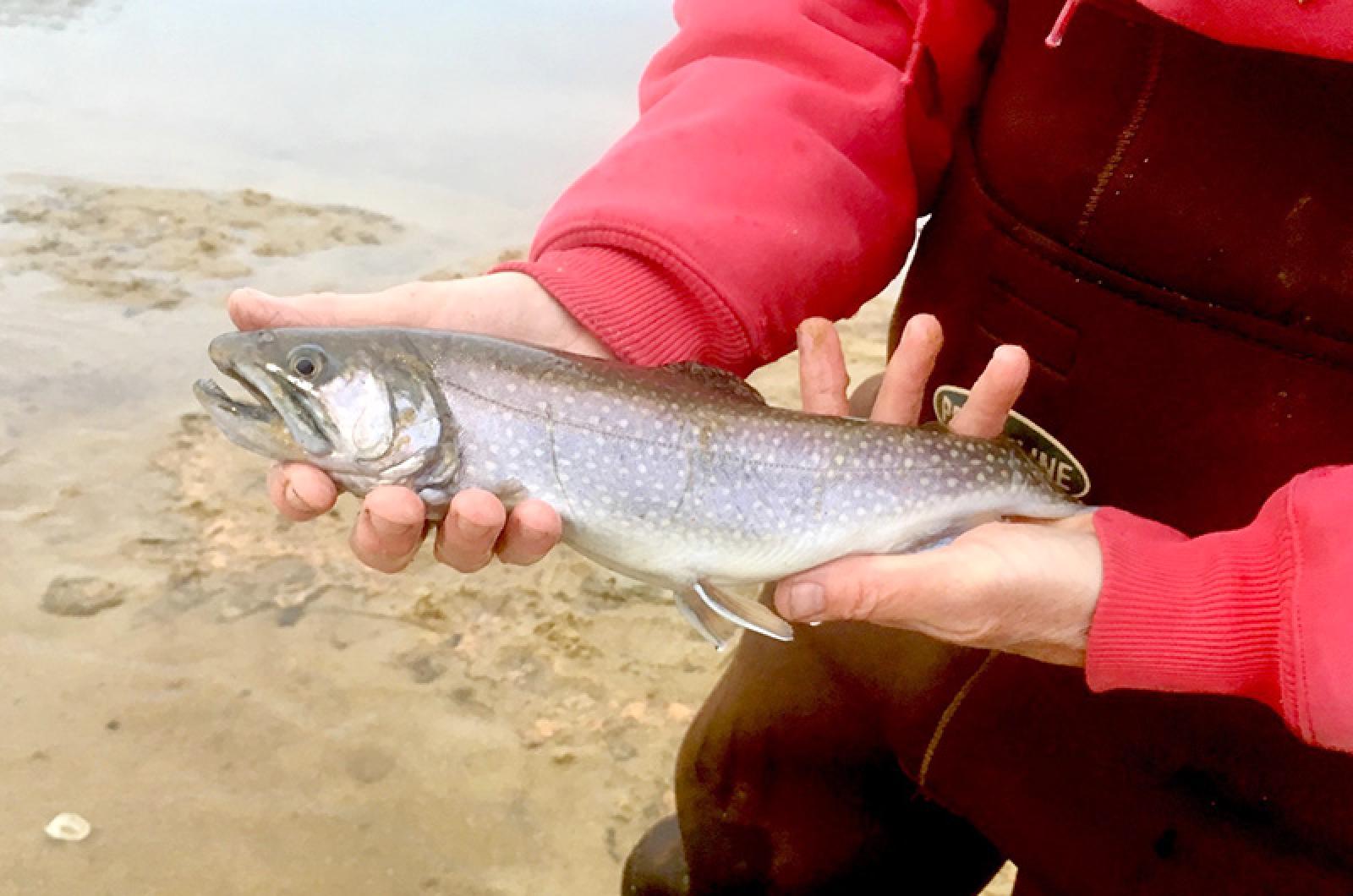Tom Robinson of Vineyard Haven and I were after white perch in Tisbury Great Pond. We caught only one fish, but it turned out that was all we needed.
My fishing rod was braced against a branch with a suitable fork in it that I had picked up along the path and stuck into a sandy bank. But either there were no perch about or they were uninterested in the earthworm on my hook — which seemed unlikely for a fish whose small size belies its aggressiveness.
Tom had forded a shallow channel and was standing on a submerged bank a short distance away.
Fish or no fish, it was a pleasant spring evening. The day’s unrelenting wind had calmed, and an osprey in flight — wheeling and diving, waiting for just the right moment to set its own hooks into a fish — entertained us. “I’ve got a perch,” Tom shouted. “At least I think it’s a perch.”
The fish was not swimming in the short, erratic bursts characteristic of a perch. It pulled in a straight line. A striped bass? Tom had caught a small striper from that same spot a few years ago, and the pond was open to the sea. But the fish didn’t move with the strength of a fish born to hold its station in the rough surf.
Tom walked back carefully and slid his catch from the water up on the dry sand. “It’s a brook trout!” he said in astonishment.
I was stunned too. The beautiful and delicate fish Tom cradled in his hands was a sea-run brook trout, about 14 inches long. Known locally as a “salter,” these anadromous versions of brook trout move between fresh and saltwater creeks and estuaries to feed.
I emailed a photo to Steve Hurley, Massachusetts Division of Fisheries and Wildlife Southeast District Fisheries manager, who said salters most often go down to the saltwater after the spawn in November, generally stick close to their home stream and its estuaries, and move back upstream in April and May. Brook trout can tolerate saltwater when they reach a size of about six inches.
“When in the salt, they can exhibit rapid growth rates up to four inches over the winter,” Mr. Hurley said.
Neither Tom nor I had ever seen a salter, a fish once abundant in the streams and rivers of southeastern Massachusetts before the dams, impoundments and diversions were made that altered their natural habitat. Our encounter that evening faced long odds.
Brook trout migrated to the Island beginning about 20,000 years ago along a system of drainage channels created by the melting and receding Laurentide ice sheet. Wild native brook trout still survive in small pockets of cold water in Island brooks and streams.
However, a trout that responds to its ancient urge to feed in saltwater faces considerable obstacles. In his conclusions to a September 2012 fisheries survey of Mill Brook and its tributaries to officially document wild brook trout populations, Mr. Hurley reported that while fish persisted “their access to tidal areas is blocked by numerous dams and barriers, which do not allow the anadromous life history known locally as ‘salters.’”
But nature is resilient. Nelson Bryant of West Tisbury, 94, retired New York Times outdoors columnist, told me that over the past 80 years he has caught dozens of salters in Tisbury Great Pond. The most recent one, he said, “was off the mouth of the Tiasquam River a couple of years ago.”
Mr. Hurley said Tom’s catch tells us that some brook trout can still make the historic down-migration from the Tiasquam River or Mill Brook to Tisbury Great Pond. “However, the presence of dams and other obstructions makes it much harder for a fish of that size to return to its spawning area and complete its life cycle,” he said.
“Historically before the dams on Mill Brook, they [salters] could easily find these refuge areas to spend the summer,” Mr. Hurley said. “This fish will have a much harder time to find an area with cold enough water and enough cover from predators to survive.”
There is no comfort in the fact that a salter here and there manages to survive on Martha’s Vineyard. No more so than when only a few osprey nested on the Island (and a campaign began to put up nesting poles), or a few piping plovers nested on our beaches (leading to a ban on vehicles on the beach) or when striped bass were in trouble (and the Derby removed bass) or (on the other side of the ledger) when the heath hen began to disappear from this earth (and we acted too late).
Why then do we ignore the plight of a species that represent our environmental heritage in favor of maintaining dams that have long since outlived their original purposes?
I can’t know in what stream Tom’s trout originated. I watched as he released the unexpected catch, proof of nature’s resilience, with the hope that a struggling species may again proliferate should a majority of Islanders ever agree to remove the hurdles placed in their path.
For more information on sea run trout go to searunbrookie.org.
Nelson Sigelman lives in Vineyard Haven and writes the Outdoors column for the Martha’s Vineyard Magazine.




Comments (3)
Comments
Comment policy »